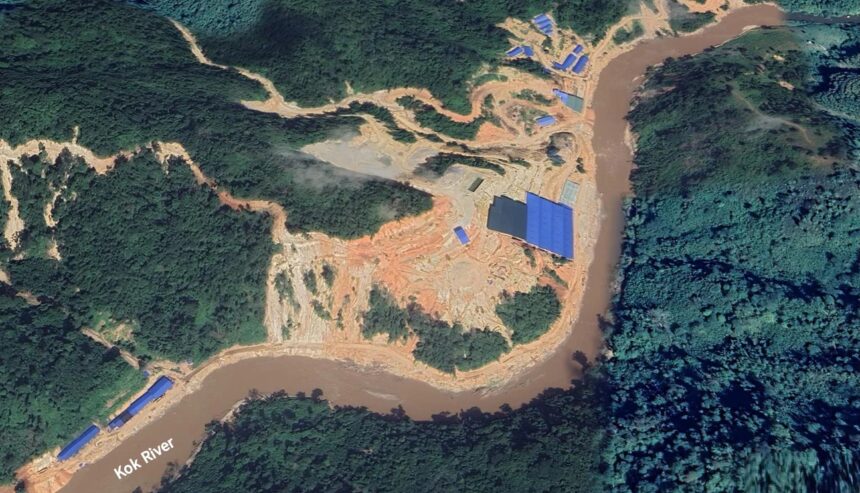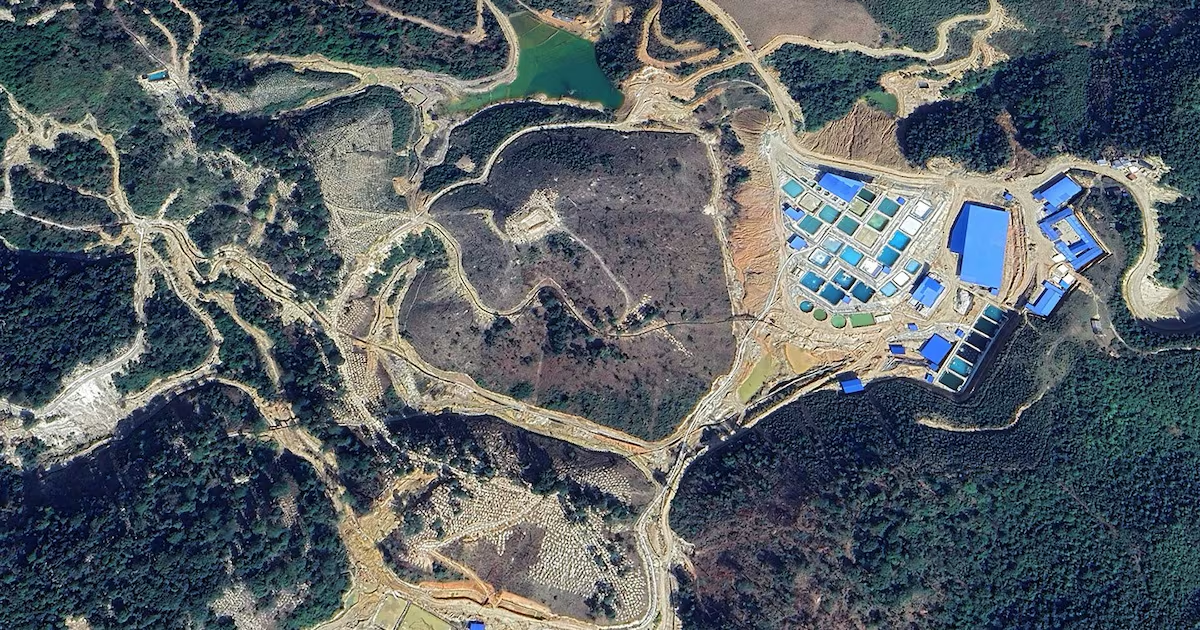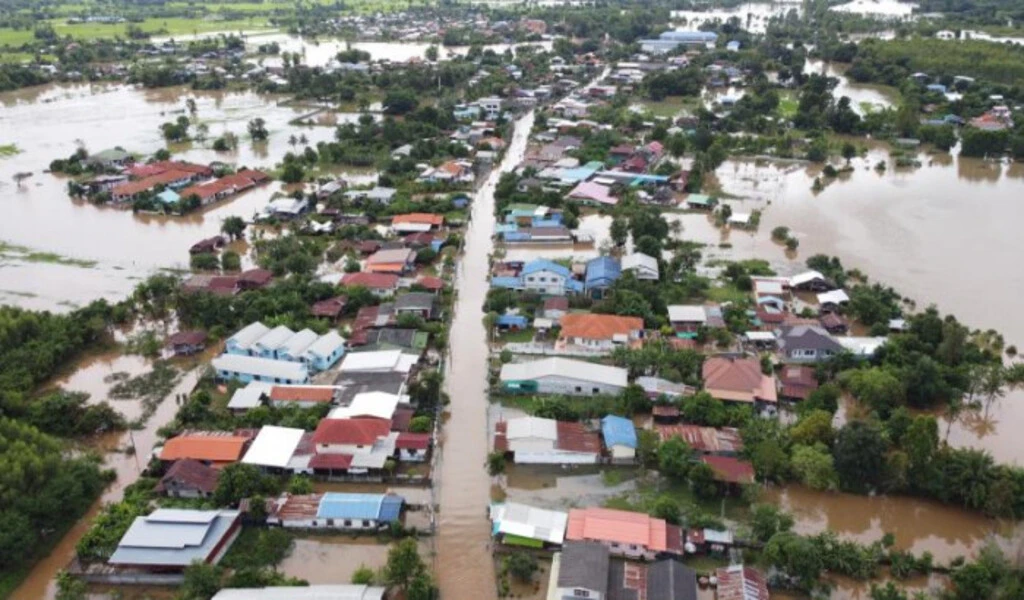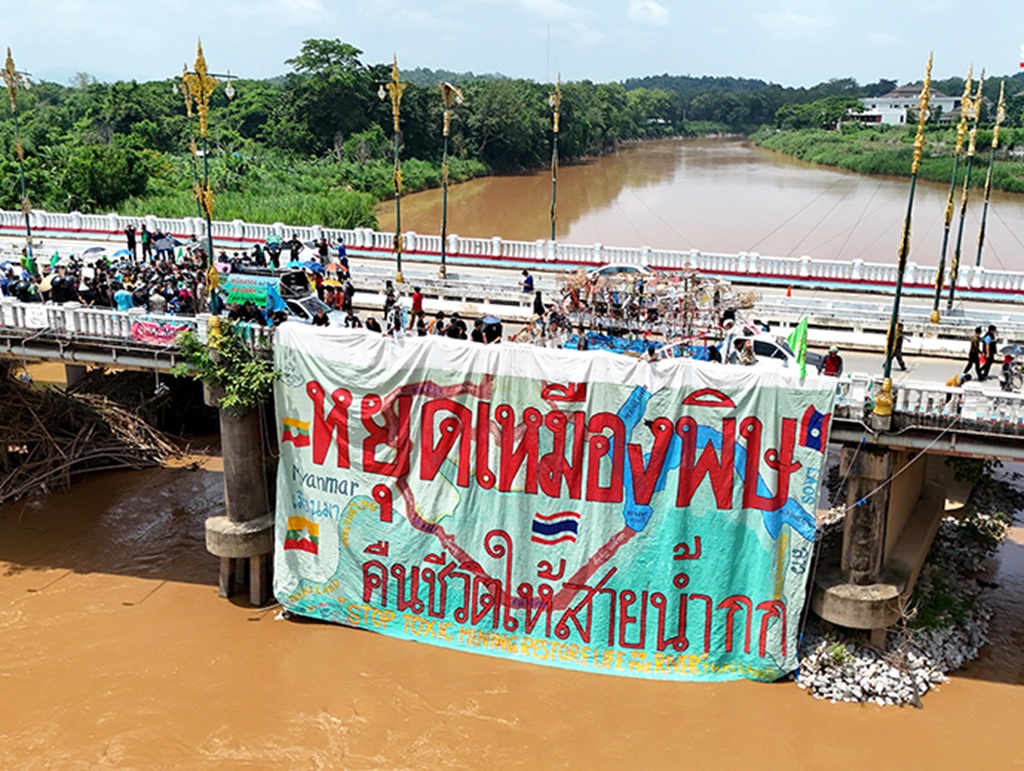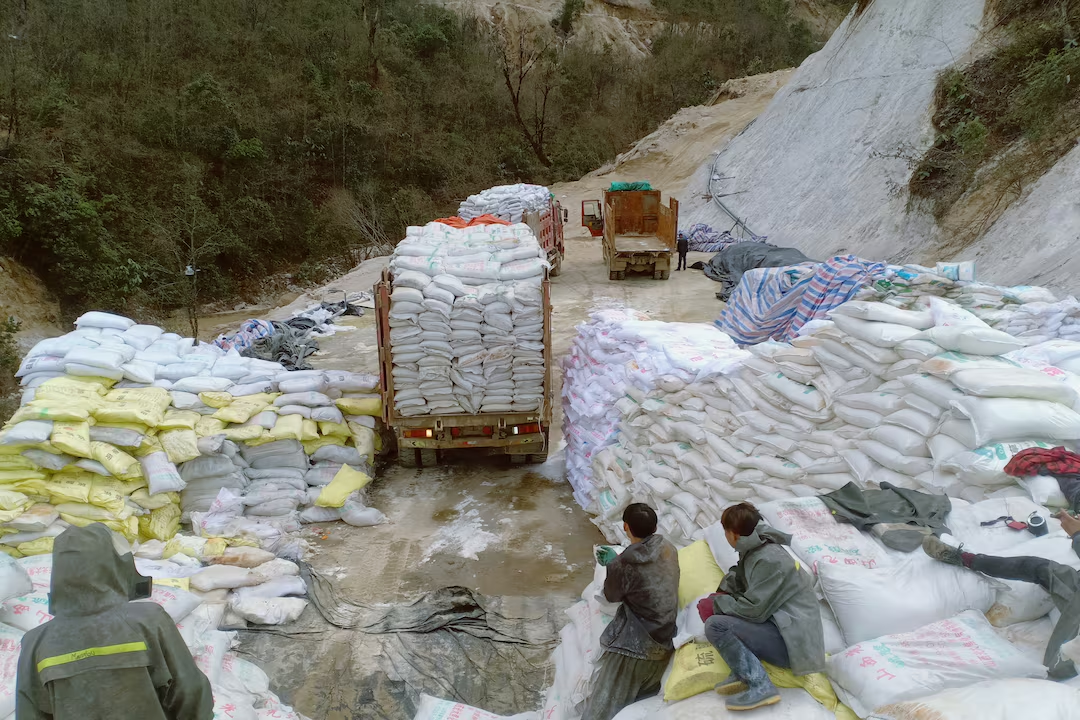CHIANG RAI – Across the vibrant forests and fields of Southeast Asia, the Mekong River winds through towns and villages, bringing life to millions. But under the surface, a slow-burning crisis is growing. Environmental groups warn that China’s growing demand for energy and rare earths is laying waste to local lands and waterways.
Massive dams on the Mekong and chaotic mining in Myanmar are at the heart of this story, with local communities suffering floods, drought, and pollution. Critics say China cares more about profits than people or the environment, and the fallout spreads far beyond its borders.
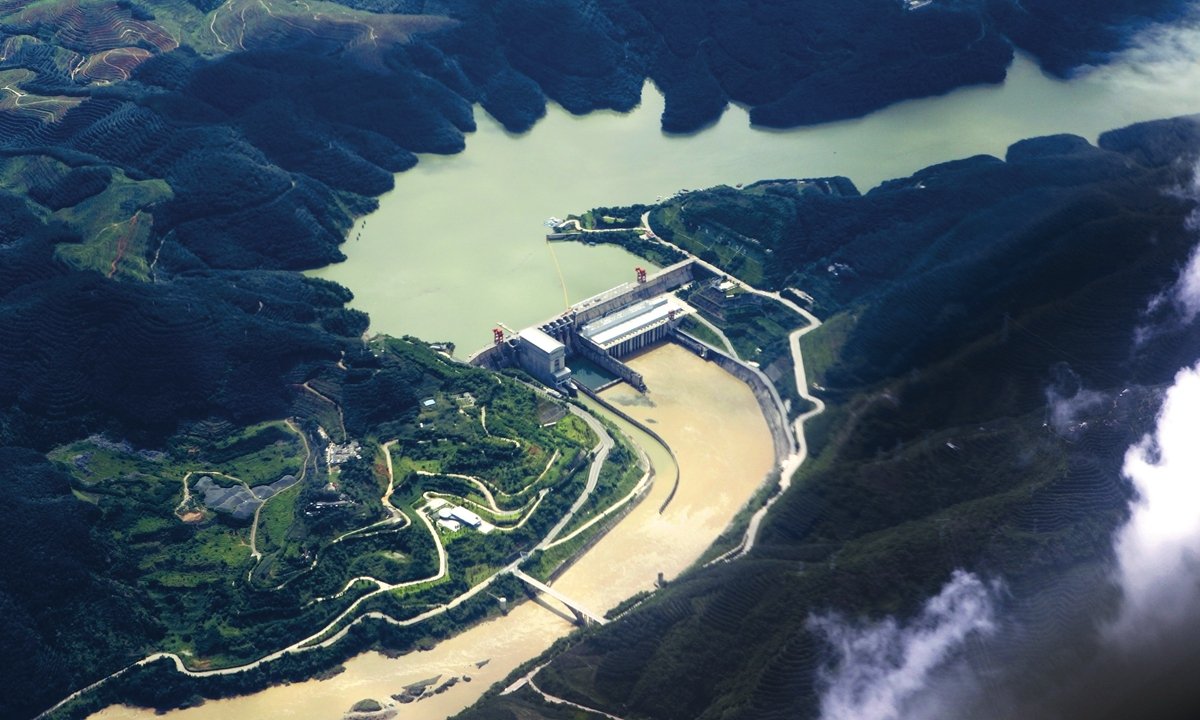
The Mekong’s Changing Course
The Mekong River Basin supports over 66 million people in China, Myanmar, Laos, Thailand, Cambodia, and Vietnam. It brings food, water for crops, and links cultures across the region. Yet China’s ongoing dam construction along the upper Mekong—called the Lancang in China—is threatening this delicate balance.
Since the early 1990s, China has built 11 hydropower dams on the Mekong, holding back huge volumes of water. The giant Nuozhadu Dam alone can store 23 billion cubic metres, enough to bury entire valleys. These projects are designed to power Chinese cities, but they have changed how the river flows.
According to 2019 research from the Mekong Research Symposium, China’s control over water releases has caused major swings in river levels, increasing both floods and droughts for those living downstream.
These changes bring real dangers. During heavy rains, sudden water releases from the Chinese dams have caused flash floods in northern Thailand. In 2024, families in Chiang Rai province woke up to muddy water racing through their homes and fields. “The floods hit us without warning,” said Niwat Roykaew, a local campaigner. “We lost our crops, and the river we relied on turned foul.”
During the dry months, water held back upstream leaves communities downstream with little to drink or farm with. A severe drought in 2017-2018 left people in southern China short on water, while crops dried up in countries downstream.
Many environmentalists, including Pianporn Deetes from International Rivers, blame China’s secretive control over its dams. “China hardly ever shares information about dam releases,” Deetes says. “Without this, those downstream can’t get ready for floods or manage droughts properly.” The Mekong River Commission, set up to manage the river’s use, has often asked China for better cooperation, but responses have been slow, and China’s power needs come first.
Myanmar’s Mining Surge and Its Consequences
While China changes the river’s flow, its hunger for minerals is changing Myanmar’s landscape. Since the military coup in 2021, mining for rare earths and gold has exploded across Myanmar, often run by Chinese companies. States like Kachin and Shan, which border China and Thailand, are seeing a tidal wave of low-regulation mining that is leaving behind ruined land and poisoned water.
Rare earths are key for making electric cars, wind turbines, and phones, but getting them from the ground means using toxic chemicals. In Kachin, satellite images show that mining pools have shot up from a few in 2016 to well over 2,700 by 2022, covering an area roughly as large as Singapore.
Many of these operations work closely with armed groups such as the United Wa State Army, with little government oversight. Wastewater pumped into rivers brings lasting damage.
The Kok River, which starts in Shan State, is now tainted with mining byproducts. In 2025, Thai officials found arsenic at nearly four times the World Health Organization’s safe limit, plus high levels of mercury and cyanide.
In Chiang Rai and Chiang Mai provinces, people have seen strange blisters on fish and noticed problems with their crops. “The river used to support us,” said a local monk, Phra Maha Nikhom. “Now, it’s unsafe even to touch.”
Social harm goes hand in hand with the environmental crisis. In Kachin, chemical spills have been linked to breathing problems, kidney disease, and illnesses caused by radioactive materials.
Groups like Global Witness report miners dying from stomach problems after chemical exposure. Mining has also brought crime and addiction, with outsiders taking top jobs and local young people pushed into unsafe work or risky tasks.
The Cost of Profit
The impact of China’s pursuit of resources in both Myanmar and along the Mekong is part of a larger pattern. “China’s growth has come at a great cost to land, air, and water,” former US Secretary of State Michael Pompeo said in 2020.
Experts point to China’s dominance in the rare earth market, providing about 70% of the global supply in 2022, as a clear example.
Inside China itself, years of loose regulation turned places like the Bayan Obo mine in Inner Mongolia into polluted wastelands. Villages near these mines struggle with health problems and undrinkable water.
While China started to clean up some pollution at home in the last decade, it has shifted many of its dirtiest mining practices to countries such as Myanmar, where war and weak laws offer cover.
Myanmar’s rare earth output climbed sharply from 2011 to 2019, with almost all of it sold to China for more than $1 billion during that time. Chinese firms take advantage of Myanmar’s weak rules, using cheap mining processes that leave behind toxic sludge. “China is acting as if these problems aren’t theirs,” said Paul Merriman from Global Witness. “They buy the minerals, but Myanmar and its neighbours pay the price.”
This attitude shapes China’s larger global projects as well, like the Belt and Road Initiative, which finances infrastructure and resource projects around the world. These activities are often criticized for harming the environment, especially in countries with weak rules. A 2017 World Bank report found that such projects can lead to lasting pollution and affect wildlife, with the Belt and Road crossing over a thousand important biodiversity hotspots.
Northern Thailand Faces the Fallout
Northern Thailand, especially Chiang Rai and Chiang Mai, finds itself stuck in the middle of this cross-border disaster. The 2024 floods, made worse by mining waste from Myanmar, destroyed homes and farmlands. Water tests in Mae Ai showed worrying levels of arsenic and mercury, making the river unsafe for fishing, irrigation, or local festivals.
People have taken to the streets, with over 1,500 Chiang Rai residents demanding that the illegal mines in Myanmar be shut down. Thai officials have suggested building a dam to catch sediment, but scientists worry it could make flooding worse or spread pollution even further. The Mekong River Commission has promised to investigate, but efforts to police the border are weak, especially where armed groups are in charge.
Thailand’s situation highlights a bigger problem. Countries downstream have little power to stop pollution coming from upstream. “We know where the trouble starts,” said a Thai official, Mr. Gob, pointing towards Myanmar. “But how can we stop it when it’s out of our hands?”
China’s strong influence over Myanmar could, in theory, help, but so far, Beijing has been slow to act. In June 2025, China’s embassy in Bangkok called for “friendly dialogue” but offered few real solutions.
A Push for Cleaner Practices
Many environmental leaders say urgent steps are needed to hold China responsible. Ma Jun, director at Beijing’s Institute for Public and Environmental Affairs, says pollution costs need to be included in mineral pricing. “Companies making money from these resources should help pay for clean-up,” he said.
The United Nations and the OECD have recommended worldwide rules for responsible mining, with clear steps to track supply chains and reduce risk.
For the Mekong, experts support a binding regional agreement that would make dam operations more open. “China must share responsibility for how its dams impact those downstream,” added Deetes. Sanctions against Myanmar’s rare earth exports or stricter import checks by Western countries might also encourage China to change course.
Still, China’s role as a top economic power makes change challenging. As the world’s biggest greenhouse gas emitter and a key player in green technology, China faces a tough choice. The need for rare earth minerals, driven by electric cars and clean energy, is expected to multiply by 2040. Unless something changes, the damage to both people and nature will get worse.
The Human Fallout
Families across the region pay the highest price. In Myanmar, indigenous people face uprooting and disease, with little hope for justice against armed groups or foreign companies. In Thailand, fishers and farmers have lost their livelihoods, and children face long-term health risks. In China, once-thriving areas near rare earth mines now deal with the bleak legacy of unchecked industry.
For many like Aung Gam in Kachin, the loss is personal. “We can’t grow food or fish anymore,” he shared. Thai villagers have seen their way of life slip away. “Our river is fading, and so is our future,” said Bundit Pantarakon, a community leader.
China’s drive for energy and minerals is remaking Southeast Asia, often at great cost. From shifting river flows to poison in the water, the signs are hard to ignore. Activists and residents across the region call for real accountability and demand that China place sustainability above short-term gain. While the country has started to address pollution at home, moving harmful industries abroad remains a worrying trend.
As the world races towards cleaner technology, it’s important not to overlook the heavy price others pay. The future of the Mekong and the well-being of millions depend on stronger regional cooperation and responsible supply chains. Without change, Southeast Asia will keep bearing the weight of China’s growing resource needs.




